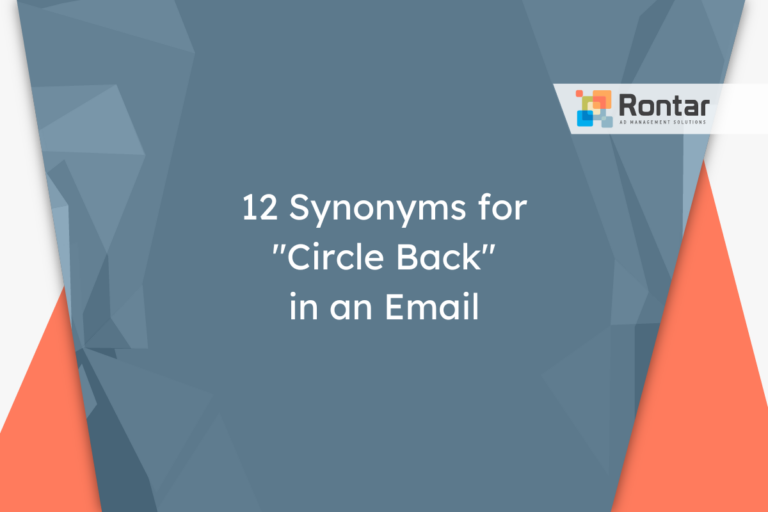16 Synonyms for “To My Understanding”

In communication, especially at work, how you say something is as important as what you say. “To my understanding” is a common phrase that helps clarify your point without sounding too assertive. However, there are many other ways to express the same idea.
This article explores 16 alternatives, explaining how each can suit different professional situations.
Is It Professional to Say “To My Understanding”?
Yes, it is professional to say “to my understanding”. This phrase is also considered formal and polite. It’s a way to share your perspective or what you believe to be true, without assuming you have all the information. This phrase is suitable for use in various situations, especially when you want to clarify a point or correct a possible misunderstanding.
You can use “to my understanding” with different types of recipients or correspondents, such as colleagues, managers, clients, or professional acquaintances. It is appropriately used in written communication like emails, reports, or formal letters, as well as in verbal communication during meetings or presentations.
Here is an example:
Hello Mark, To my understanding, the deadline for the project submission has been moved to next Friday. Could you please confirm if this is the case? Best regards, Emily
Pros:
- Shows humility by acknowledging there might be limits to your knowledge.
- Makes communication more polite and less assertive.
- Opens the conversation for clarification or correction.
Cons:
- Could be perceived as lacking confidence in your statement.
- May imply uncertainty, which could be a drawback in situations where decisiveness is needed.
Sometimes, using synonyms or alternatives can help adjust the tone of your communication to better fit the situation or the audience’s expectations.
16 Other Ways to Say “To My Understanding”
There are many ways you can express that you’re sharing your own perspective or what you believe is true. Here are sixteen alternatives that might fit different situations better:
- As I understand it
- Based on my understanding
- To my knowledge
- From what I gather
- As far as I can tell
- From my point of view
- From my perspective
- In my view
- As per my understanding
- From my standpoint
- According to my understanding
- Based on what I know
- As I interpret it
- In my understanding
- From how I see it
- As I see it
1. As I understand it
Compared to “to my understanding,” “as I understand it” feels a bit more casual but still remains professional and polite. It lightly suggests that what follows is your interpretation of the information or situation.
This alternative is suitable in a slightly informal or conversational setting but still acceptable in professional emails or meetings. It works well when you want to share your understanding without appearing overly assertive. You might use this with colleagues, in client emails, or during discussions where clarification is sought.
Here’s an example:
Hello Thomas, As I understand it, we are shifting our meeting to next Wednesday. Could you confirm? Best, Rachel
2. Based on my understanding
“Based on my understanding” is similar to the original yet offers a sense of having considered or thought about the subject matter. It’s equally professional and formal.
This alternative is excellent when you aim to present your viewpoint based on the information you’ve reviewed, especially in settings where analytical thinking is appreciated. It’s particularly apt for professional emails, reports, or during presentations. Use this when addressing colleagues, superiors, or external partners in written communications or meetings.
Example:
Hello Samantha, Based on my understanding, the recent data suggests a shift in market trends. Could we discuss this further? Regards, Liam
3. To my knowledge
“To my knowledge” introduces your statement by indicating that what you’re about to say is what you believe to be true, based on the information available to you. It’s a synonym that adds a level of certainty but also humility.
This phrase is ideal when you want to assert knowledge about a particular area or subject, especially if you’re considered an expert or go-to person on the topic. It’s suited for emails, professional discussions, or when answering questions during meetings. It’s perfect for interactions with colleagues, clients, or in advisory contexts.
Message example:
Hello Jacob, To my knowledge, the software update should resolve the issue you mentioned. Could you test and confirm? Best wishes, Amelia
4. From what I gather
Using “from what I gather” implies that you’ve collected information from various sources, and you’re summarizing your current understanding. It’s somewhat informal but can be polite and professional depending on the context.
This synonym is best when you’ve heard or read pieces of information from different places and are piecing them together. It works well in emails and meetings, especially when you’re not the direct source of information but still wish to contribute to the conversation. You might use this during team updates or when clarifying project details with a colleague.
Example:
Hello Emily, From what I gather, the client is looking for additional services. Shall we organize a meeting to explore our options? Cheers, Ben
5. As far as I can tell
“As far as I can tell” hints at a careful observation or assessment of a situation without claiming complete knowledge. It aligns closely with the original in terms of being polite and professional, but with a nuance of personal insight.
This alternative is particularly effective in discussions where you want to present your understanding after reviewing the available information, but you’re open to other interpretations. It’s suitable for professional settings, during performance reviews, in email correspondences, or team meetings. Use it when you’re discussing observations or findings with colleagues or superiors.
Email example:
Hello Kevin, As far as I can tell, the project is on track for delivery by the end of the month. Can you confirm the final details? Kind regards, Olivia
6. From my point of view
“From my point of view” shows that you are sharing your personal opinion or how you see things. It makes clear that you understand there are other ways to look at the situation. This phrase is polite and can be informal or formal, depending on how it’s used.
This alternative works well when you’re in discussions where personal input is encouraged, like team brainstorming sessions or when writing personal reflections in an email to a colleague. It’s a good fit for situations where personal insights are valued, and you’re speaking from your own experience.
Here’s a quick email example:
Hello Monica, From my point of view, leveraging social media could enhance our project's visibility. What are your thoughts? Warm regards, Luke
7. From my perspective
Similar to “from my point of view,” “from my perspective” emphasizes your unique viewpoint. It is professional, formal, and polite. This phrase is suitable when you want to highlight that your understanding may be influenced by your position or experience.
Use this alternative in professional settings where your individual perspective is important to the discussion, like in strategy meetings or in written reports. It’s great for communicating your stance on complex issues to colleagues, managers, or in discussions with clients.
Email sample:
Hello Alan, From my perspective, the proposed changes could significantly impact our workflow positively. Could we discuss this further? Best, Sophie
8. In my view
“In my view” is a way of introducing your opinion or how you think about something. It strikes a balance between being polite and authoritative. While it’s straightforward, it also opens up the floor for others to share their views.
This phrase is great for debates or discussions where multiple viewpoints are being considered, like in team meetings or panel discussions. It’s also suitable for emails where you need to assert your position on a topic but want to encourage others to share their thoughts.
Consider this email example:
Hi Jenna, In my view, adopting a new project management tool could improve our team's efficiency. Let's discuss. Regards, Derek
9. As per my understanding
“As per my understanding” signals that you’re about to express what you’ve interpreted or how you’ve made sense of something. It’s a formal way to introduce your thoughts while acknowledging that you’re open to corrections. This phrase is very professional and polite.
It’s particularly useful in professional emails or meetings when you’re discussing complex subjects and want to clarify your understanding of the facts. Use it with superiors, in formal reports, or during technical discussions to show respect for others’ viewpoints while sharing your own.
Email example:
Hello Elliot, As per my understanding, we are to prioritize client feedback in the next product update. Is this correct? Many thanks, Natalie
10. From my standpoint
Using “from my standpoint” is another way to share your perspective, focusing on your position or role in a situation. It’s somewhat formal and polite, suitable for professional contexts where personal experience or role-specific insights are relevant.
This alternative is effective in discussions about roles and responsibilities, in performance reviews, or when providing feedback based on your experience. It’s a good fit for conversations with team members, managers, or when outlining your views in emails.
Example:
Hello Hector, From my standpoint, additional training sessions would greatly benefit the new hires. Could we implement this? Kind regards, Grace
11. According to my understanding
When you say “according to my understanding,” you are sharing what you believe to be true based on the information you have. This phrase is formal and polite, making it perfect for professional settings where you want to carefully present your point of view.
This is a suitable choice when discussing project details, clarifying instructions, or in emails seeking confirmation on certain points. It works well with managers, colleagues, and clients, especially in situations where clarity is crucial, and misunderstanding can lead to problems.
Email example:
Hello Patricia, According to my understanding, the budget allocation for marketing has been increased. Can we discuss how to best utilize this? Best wishes, Connor
12. Based on what I know
“Based on what I know” suggests that you’re offering information or opinions formed from what you’ve learned or been told. It strikes a balance between certainty and openness to more information, regarded as professional, polite, and sometimes informal, based on the setting.
It’s great for when you’re sharing updates in team meetings, writing emails about projects you’re working on, or when contributing to discussions where your specific knowledge could be valuable. This phrase is versatile and can be used with a range of recipients, including team members, project leaders, and clients, when conveying what you understand about a situation or task.
Example:
Hi Felix, Based on what I know, our team's proposal has been well received by the board. Shall we start planning the next steps? Thank you, Tara
13. As I interpret it
“As I interpret it” implies that you are sharing your personal interpretation of information or events. It’s a formal and polite way to convey your understanding while acknowledging that others might see things differently.
Use this phrase in discussions that involve analysis or where different interpretations might exist, like in strategy meetings or when reviewing data reports. It’s suited for communications with colleagues and superiors when you’re offering a unique perspective or drawing conclusions from complex information.
Here’s a sample email:
Hello Elaine, As I interpret it, the data suggests we should increase our digital advertising spend. What are your thoughts? Regards, Omar
14. In my understanding
“In my understanding” is a way to state what you believe is true based on what you know. This phrase is formal but gentle, and it is very polite. It’s a great choice for professional environments where you wish to convey what you understand while indicating you’re open to further information or correction.
This alternative is well-suited for writing detailed emails, participating in meetings where you need to share your understanding of a project or policy, or when responding to queries from clients or colleagues. It’s ideal for moments when clear communication is key, especially when the topic is complex or detailed.
Example:
Hello Harrison, In my understanding, we are to proceed with the plan as discussed in the last meeting. Please confirm if there are any updates. Sincerely, Mia
15. From how I see it
“From how I see it” is a way of explaining your viewpoint or how you think a situation should be perceived. It’s informal yet polite and offers a personal touch to your explanation, making it somewhat less formal but still professional in the right contexts.
This phrase is great for informal meetings, casual emails to colleagues, or when brainstorming ideas where your personal insight is encouraged. It’s best used with people you have a working relationship with where a degree of personability is appreciated.
Example:
Hello Ivan, From how I see it, focusing on customer service improvements could really boost our ratings. Let’s discuss further? Cheers, Vanessa
16. As I see it
Lastly, “as I see it” shares your personal perspective in a straightforward manner. While it’s polite, it’s also direct and can be both informal and formal, depending on the way it’s used. This phrase expresses clarity of thought and conviction in your viewpoint.
This alternative is perfect for all types of discussions, emails, and meetings where your opinion is being asked or when you want to clearly state your position on a matter. It’s suitable for interactions with colleagues, during presentations, or in one-on-one discussions with your boss.
Example:
Hello Zoe, As I see it, expanding our team would help manage the increased workload more efficiently. Can we set up a time to discuss this possibility? Kind regards, Leo
Final Thoughts
Choosing the right way to share your thoughts can make your communication clearer and more respectful. The phrases we’ve explored offer various options for expressing your understanding, each with its own tone and formality. Using these phrases correctly can help avoid misunderstandings and make conversations more productive.






